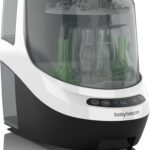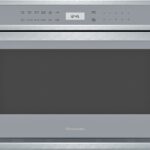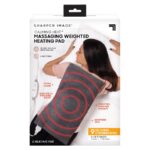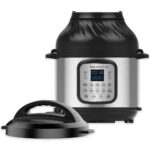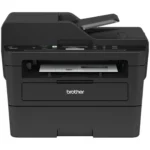Calming Heat heating pads offer targeted heat therapy for soothing aches and pains. When your device isn’t performing as expected, quick troubleshooting can help restore its function. To resolve common issues, first check that your Calming Heat pad is properly plugged in and the settings are correct.
If your pad doesn’t feel hot enough, give it 5-10 minutes to fully heat up. Make sure the printed side is touching your body for optimal heat transfer. The weighted design with clay beads helps the pad conform to your body, enhancing contact and heat delivery.
For warranty service or more complex problems, contact Calming Heat Product Support at (800) 359-4241. They can confirm warranty eligibility and provide specific return instructions if needed.
| Feature | Benefit |
|---|---|
| Targeted heat | Soothes specific areas |
| Weighted design | Improves contact and comfort |
| Auto-off timer | Enhances safety |
| Multiple heat levels | Customizable relief |
Troubleshooting Your Calming Heat Heating Pad
Common Issues and Solutions
- Heating pad not warming up: Check the power connection. Make sure the heating pad is plugged in properly and the outlet is working. Test the outlet with another device to ensure it is receiving power.
- Heating pad not getting hot enough: Adjust the heat settings. Many heating pads have multiple heat settings. Try increasing the setting to a higher level.
- Heating pad gets too hot: Lower the heat setting or try using a thicker layer of clothing between the heating pad and your skin.
- Uneven heating: This could indicate a faulty heating element within the pad. If you suspect a faulty element, stop using the pad and contact the manufacturer.
- Controller issues: If the controller is not working correctly, check the batteries (if applicable) or ensure it is properly connected to the heating pad.
- Automatic shut-off: Some heating pads have an automatic shut-off feature for safety. If the pad turns off unexpectedly, check the timer settings or the product manual. You may need to turn the pad on again.
- Unusual smells: If you notice any burning or unusual smells, immediately unplug the heating pad and stop using it. This could indicate a safety hazard.
Tips for Safe and Effective Use
- Read the instructions: Always read the manufacturer’s instructions before using your heating pad. This will provide specific guidance for your model.
- Do not use on infants or people with certain health conditions: Heating pads should not be used on infants, people with diabetes, or those with decreased skin sensitivity. Consult a doctor if you have concerns.
- Avoid prolonged use in one area: Do not use the heating pad on the same area of your body for extended periods. This can increase the risk of burns.
- Do not use with creams or ointments: Certain creams and ointments can react with the heat and cause skin irritation or burns.
- Store properly: When not in use, store your heating pad in a cool, dry place away from direct sunlight.
Understanding Different Types of Heating Pads
There are several types of heating pads available, each with its own pros and cons:
| Type | Pros | Cons |
|---|---|---|
| Electric | Wide range of heat settings, Fast heating, Often have automatic shut-off features | Can be bulky, Cord can be inconvenient, Potential electrical hazard if not used properly |
| Microwaveable | Easy to use, No cords or batteries, Portable | Heat does not last as long as electric pads, Can be unevenly heated, Risk of burns if overheated in the microwave |
| Chemical | Disposable, Convenient for travel, No electricity required | Single-use, Limited heat control, May not get as hot as electric or microwaveable pads, Potential for leaks or chemical irritation |
Choosing the right type of heating pad depends on your needs and preferences. Consider factors like how often you’ll use it, where you’ll use it, and your desired level of heat control.
Understanding Your Calming Heat Pad
The Calming Heat pad offers comfort through heat and weight. It comes in different sizes with clay beads for added pressure. Let’s explore its key features and uses.
Components and Design
The Calming Heat pad uses electricity to generate warmth. Its outer layer is soft fabric for comfort. Inside are clay beads that add weight and help distribute heat evenly.
Key parts:
- Heating element
- Power cord
- Control panel
- Fabric cover
- Clay bead filling
The control panel lets you adjust heat levels and set timers. Most models have auto-off features for safety. The pad shuts off after 2 hours of heat use.
Clean your pad by spot cleaning with a damp cloth. Never submerge it in water or machine wash.
Different Sizes and Their Uses
Calming Heat pads come in various sizes to suit different needs:
| Size | Best for |
|---|---|
| Small | Neck, shoulders |
| Medium | Back, legs |
| Large | Full body |
Choose based on the area you want to treat. Smaller pads are more portable. Larger ones cover more surface area.
Some models like the Calming Heat Sauna Wrap are designed to wrap around your body. These are great for full-body relaxation.
Use the right size for your needs. A too-small pad won’t cover enough area. A too-large one might be unwieldy.
Weighted Feature and Clay Beads
The Calming Heat pad’s weight comes from clay beads inside. This feature adds pressure for extra comfort.
Benefits of the weighted design:
- Promotes relaxation
- May reduce anxiety
- Helps with sleep
The clay beads also help spread heat evenly across the pad. This prevents hot spots and ensures consistent warmth.
The weight varies by pad size. Larger pads are heavier. Check the product details for exact weights.
Remember not to sleep on the pad or let anyone lean on it. This could cause burns or be a fire risk.
Troubleshooting Common Issues
Heat pad problems can often be resolved with simple checks and repairs. Identifying the root cause helps fix issues quickly and safely.
Assessing the Power Supply
Check if your heating pad is plugged in properly. Ensure the outlet works by testing it with another device. Inspect the cord for any visible damage or fraying.
Use a multimeter to test the continuity of the power cord. Set the multimeter to the continuity setting and touch the probes to each prong of the plug. A beep indicates a good connection.
If the cord is damaged, replace it or have it repaired by a professional. Never use a heating pad with a damaged cord as it poses a safety risk.
Control Unit and Appliance Controls Repair
Examine the control unit for any visible damage. Look for loose connections or burnt components. Clean the controls with a soft, dry cloth to remove dust or debris.
Test each heat setting to see if the controls respond correctly. If certain settings don’t work, the problem may lie in the control unit circuitry.
For digital controls, check if the display is functioning properly. Reset the unit by unplugging it for a few minutes, then plugging it back in.
If issues persist, you may need to replace the control unit. Consult the manufacturer’s guide for compatible replacement parts.
Heating Pad Not Heating
First, verify the pad is receiving power and the controls are set correctly. Feel the pad for any warm spots to determine if heating elements are partially working.
Check internal connections by gently flexing the pad. Listen for any rattling sounds that might indicate loose wires.
Use your multimeter to test the heating elements. Set it to resistance mode and measure across the power input terminals. A reading of infinity suggests a broken heating element.
If the heating element is faulty, it’s usually more cost-effective to replace the entire pad rather than attempt a repair.
Uneven Heating or Cold Spots
Uneven heating often indicates issues with internal wiring or heating elements. Gently bend the pad to check for any unusual stiffness or crunching sounds.
Create a heat map by placing the pad on a dark surface and covering it with a thin cloth. Turn it on and observe any cold spots.
| Common Causes | Possible Solutions |
|---|---|
| Damaged wires | Professional repair |
| Faulty element | Replace heating pad |
| Folded/kinked pad | Flatten and redistribute filling |
For minor cold spots, try redistributing the internal filling by gently massaging the pad. If problems persist, consider replacing the heating pad for safety.
Remember to always follow manufacturer guidelines when troubleshooting. If you’re unsure about any repair, seek professional help to avoid safety risks.
Therapeutic Benefits
Heat therapy offers powerful relief for various physical ailments. It can soothe sore muscles, ease joint pain, and enhance workout recovery. Targeted application of warmth provides comfort and promotes healing in specific body areas.
Targeted Heat Therapy for Joints and Muscles
Heat therapy can effectively target problem areas in joints and muscles. Apply warmth to stiff knees, aching shoulders, or tense back muscles for 15-20 minutes at a time. This increases blood flow to the area and relaxes tight tissues.
Heating pads, warm compresses, or microwaveable heat packs work well for spot treatment. For larger areas, try a warm bath or shower. The moist heat penetrates deeply into muscles and joints.
Heat therapy is especially helpful for chronic conditions like arthritis. It can reduce pain and improve flexibility before physical activity. Always use a barrier like a towel to protect your skin from direct heat.
Calming Heat to Ease Aches and Pains
Applying gentle heat calms your body and mind. This makes it ideal for easing general aches and pains. A warm compress on your forehead can relieve tension headaches. Heated neck wraps soothe stiff necks from poor posture or stress.
For widespread muscle soreness, soak in a warm bath with Epsom salts. The heat increases circulation while the magnesium in the salts further relaxes muscles. Limit baths to 20 minutes to avoid overheating.
Infrared saunas offer another full-body option. The dry heat penetrates deeply to ease pain and promote relaxation. Start with short 10-15 minute sessions and stay hydrated.
Supplementing Fitness Regimes
Heat therapy complements your fitness routine in several ways. Use it before workouts to warm up muscles and increase flexibility. This can improve performance and reduce injury risk.
After exercise, heat helps soothe sore muscles and speed recovery. Apply warmth to tired legs after a run or to your back after weightlifting. This increases blood flow to repair micro-tears in muscle fibers.
| Heat Therapy Method | Best For | Duration |
|---|---|---|
| Heating pad | Targeted relief | 15-20 min |
| Warm bath | Full body soak | 15-20 min |
| Infrared sauna | Deep muscle penetration | 10-15 min |
For chronic injuries, alternate heat and cold therapy. Use heat before activity to loosen tissues. Apply ice after to reduce inflammation. This combination promotes healing and maintains flexibility.
Product Options and Considerations
Choosing the right Calming Heat product involves weighing factors like price, style, and heat settings. These considerations help ensure you get the most suitable option for your needs.
Comparing Price and Value
Calming Heat offers different products at varying price points. The standard heating pad measures 12 x 24 inches and weighs 4 pounds. Higher-end models may include extra features like massage functions.
When evaluating value, consider:
- Heat intensity options
- Size and coverage area
- Additional features (e.g., massage)
- Warranty and customer support
A basic model might suffice for occasional use. For frequent pain relief, investing in a premium option could be worthwhile.
| Model | Size | Weight | Features | Price Range |
|---|---|---|---|---|
| Basic | 12×24″ | 4 lbs | Heat only | $$ |
| Deluxe | 12×24″ | 4 lbs | Heat + Massage | $$$ |
| Flexi Wrap | Variable | Lightweight | Flexible, Heat only | $$ |
Considering a Sauna Wrap
A sauna wrap offers full-body heat therapy. It differs from localized heating pads by enveloping larger areas.
Benefits of sauna wraps:
- Increased circulation
- Full-body relaxation
- Potential weight loss support
Drawbacks include:
- Higher price point
- Requires more space
- May not target specific pain areas as precisely
The Calming Heat Flexi Wrap provides a middle ground. It’s flexible enough to wrap around various body parts while offering targeted heat therapy.
Selecting Appropriate Levels of Heat
Calming Heat products typically offer multiple heat settings. Choosing the right level is crucial for comfort and safety.
Tips for selecting heat levels:
- Start low and increase gradually
- Consider your pain tolerance
- Be aware of skin sensitivity
- Don’t exceed recommended usage times
Most Calming Heat products have an auto-off feature for safety. Heat functions often turn off after 2 hours, while massage features may stop after 15 minutes.
For chronic pain, consult your doctor about appropriate heat levels and duration. Remember, higher heat isn’t always better. The goal is to find a comfortable, effective setting for your needs.
Frequently Asked Questions
Calming Heat pads can sometimes experience issues. These questions address common problems and maintenance tips to keep your heating pad working effectively.
Why is the Sharper Image Calming Heat pad not heating up?
Check if the pad is plugged in properly. Ensure the power outlet works. Press the power button firmly. If these steps fail, the heating element may be faulty. Contact customer support for assistance.
What should I do if my heating pad is blinking and not functioning properly?
Unplug the pad and wait 30 seconds. Plug it back in and turn it on. If blinking continues, the controller might be malfunctioning. Try resetting the pad by holding the power button for 10 seconds.
How can I replace a lost or damaged Sharper Image Calming Heat pad power cord?
Contact Calming Heat’s customer service directly. Provide your model number and describe the cord you need. Avoid using non-original cords as they may not be compatible or safe.
How are the Sharper Image Weighted Heating Pads operated?
Calming Heat pads feature simple controls. Press the power button to turn on. Use temperature buttons to adjust heat. The pad automatically shuts off after 2 hours for safety.
What are some effective tips for maintaining my Calming Heat pad?
Clean the pad with a damp cloth when unplugged. Never submerge in water. Store flat or loosely rolled. Avoid folding to prevent damage to internal wires. Inspect the cord regularly for wear.
| Maintenance Task | Frequency | Notes |
|---|---|---|
| Surface cleaning | Weekly | Use damp cloth only |
| Cord inspection | Monthly | Check for fraying |
| Storage check | Seasonal | Keep flat or loosely rolled |


